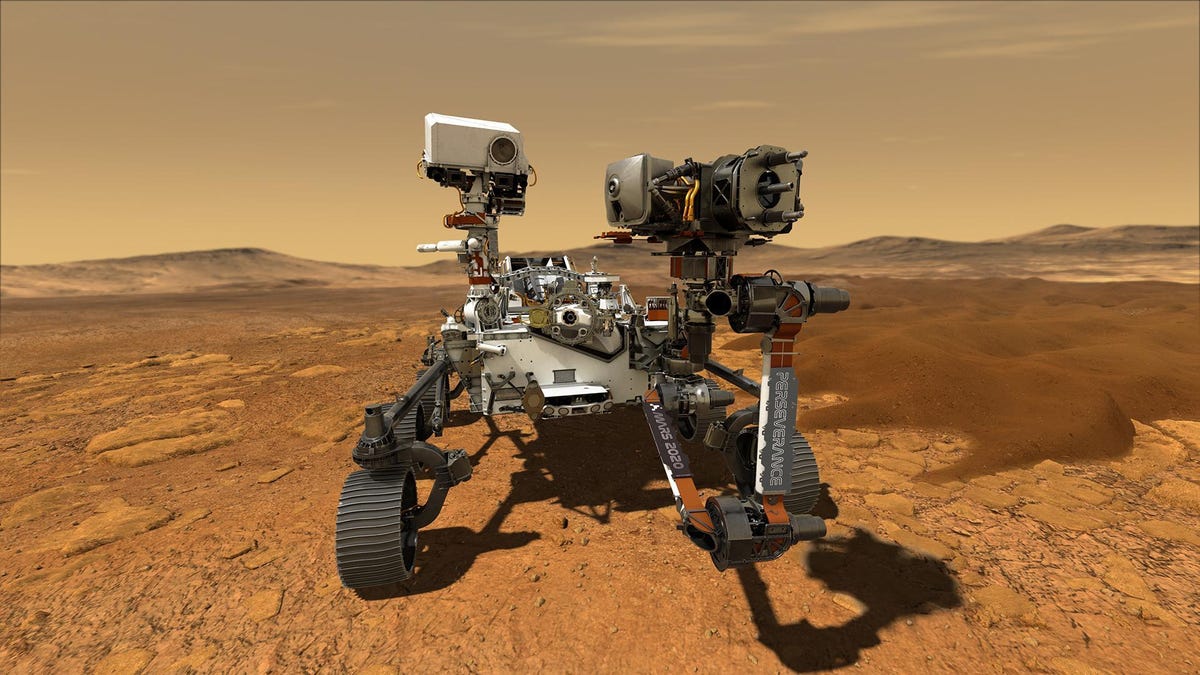Tracking NASA's Mars Perseverance rover, a year in
NASA's Mars Perseverance rover launched a year ago. Here's a look back at some of its milestones and missions to come.

Mars Perseverance, one year in.
Friday marks one year since NASA launched its Perseverance rover on a bold mission to Mars.
Since it landed inside the 28-mile-wide (45 kilometer) Jezero Crater in February, Perseverance has accomplished more than any other Mars rover. It's collected rock samples for a future return to Earth; deployed a miniature helicopter, the first ever rotorcraft to fly on another planet; and converted carbon dioxide to oxygen -- to name a few achievements.
The rover is one of three unmanned spacecraft from three different countries that set off for Mars in July 2020, along with the United Arab Emirates' Hope Probe and China's Tianwen-1 rocket. All three took advantage of an opportune launch window when objects launched from Earth would have a shorter, more efficient path to Mars because of the planets' alignment.
Perseverance's main goal is to seek signs of ancient life, particularly in certain rocks known to preserve signs of life over time. Scientists think a network of rivers probably fed into Jezero Crater, making it a prime place for life to have evolved on Mars.
"You know, on Earth, one of the reasons we don't really have a great understanding of where and when life first started is because the rocks have been completely destroyed by plate tectonics and erosion and all of that," Briony Horgan said. Horgan, a member of the science team for Perseverance rover, is also a co-investigator on the mass Kinsey camera system, which captures the stunning images sent back from Mars.
"On Mars, there are 4-billion-year-old rocks just sitting on the surface where they were deposited, waiting for us to come look at them," Horgan added. "And it's entirely possible that some of those rocks could contain signs of how life started on Mars, but then tell us about how life started on our own planet."
Mars' atmosphere, wind and weather patterns also play a key role in determining whether microbial life existed. So Perseverance brought the Ingenuity helicopter, which completed its historic first powered flight on another world on April 19. The rotorcraft continues to hit milestones, recently completing its 10th flight and passing the 1-mile (1.6 kilometer) mark.
The next day brought another first.
April 20, the rover's 60th day on Mars, Moxies, the Mars Oxygen In-Situ Resource Utilization Experiment, one of several scientific instruments the rover brought on its mission, produced 5 grams of oxygen from the Red Planet's thin, carbon-dioxide-rich atmosphere.
NASA hopes to send a manned mission to Mars within the next 20 years and, if possible, build a research station. But human survival on Mars for an extended period of time comes with its own set of unique challenges, the first of which is to provide sufficient oxygen for the astronauts to breathe.
Perseverance will spend at least one Mars year (nearly two Earth years) exploring the landing site region. Though the rover is primarily on a science mission, it will continue to test a variety of technologies that may pave the way for ambitious exploration efforts in the future.
For more information on Perseverance's missions on Mars, watch this CNET Explainer.
Roll on Percy.

